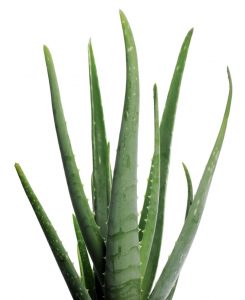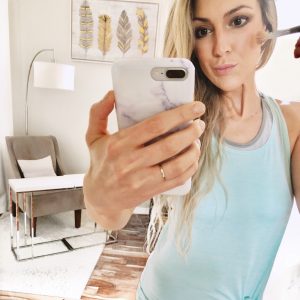Clearing Up The Cosmetic Confusion—Watch My Exclusive Interview With Clean Beauty Expert, Plus Learn The Top 10 Toxic Ingredients To Avoid!
By: Heather Hooke
Hey trubeautys!
With the fast growing “Green Beauty” trend and buzz-words like “Non-Toxic Beauty”, “Clean Beauty”, “Natural Beauty”, and “Organic Beauty” everywhere we look slapped on pretty packaging and hashtaged on influencer feeds dubbed “Best Product Ever!” …it can be a bit overwhelming for the average consumer to know the difference between these terms (there is a difference!) and how to distinguish fancy marketing from high quality products with good-for-you ingredients you can trust.
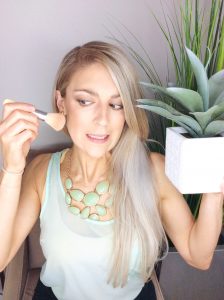
Observing this growing beauty trend and at the same time the growing confusion from consumers (and myself), I thought I’d address it head-on here at trubeautyMOVEMENT and interview an expert who really knows her stuff. Don’t miss my EXCLUSIVE Green Beauty Interview With Clean Beauty Expert, Carley Klekas, who has her Masters on the subject. Carley is the founder of CleanB Consulting (cleanbconsulting.com), a San Francisco based consulting business who has worked with some of the nation’s top beauty brands on choosing healthier + safer options.
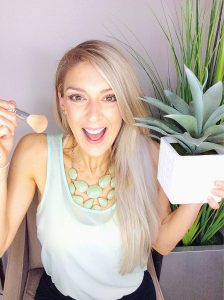
Join the Conversation!
Watch one of my top viewed Instagram-LIVE interviews in this Blog post + posted on my YouTube Channel, as Carley reveals what it really means to “Go Green” in your beauty routine—& why it matters for both your health & our environoment long term! The takeaway? You will walk away feeling empowered with an easy-to-follow action plan, so make sure to scroll to the bottom of this Blog post (or fast-forward to the end of the video), where we share our Top 10 Toxic Ingredients To Avoid! This list will be your personal guide to help you navigate which products are truly best for you and your family!

Q&A—Clean Beauty Expert: Carley Klekas, MBA, Founder CleanB Consulting
- tbM: “Clean,” “Green,” “Natural,” “Organic,” & “Non-Toxic” Beauty are huge buzz words now a days, can you clear up the differences between these terms?
- CK: Sure! It’s definitely confusing out there. There are so many terms in the beauty space that are being thrown around and are often being misinterpreted. The tricky part is that there is no legal definition for ANY of these terms. This leaves it up to brands to define what they mean. Progressive brands will be vocal and transparent about their standards; leaders in the industry include: Beautycounter, Credo and others. Generally, “Clean Beauty” is referred to as a product that has high standards for ingredient safety, only including ingredients in their formulas that have low health hazard profiles and/or at very low percentages if they are slightly more of a health risk. “Green Beauty” on the other hand, sometimes people interchange with “Clean Beauty,” but they really aren’t the same thing. By incorporating the term “green” you are implying that the ingredients and packaging, supply chain etc. of a product is environmentally conscious. Given the vast complexity of this (way too much to dive into!), a truly “green” product is hard to come by. However, by saying “green beauty” the intention is that the product takes into account both health impact and environmental responsibility. Ideally “Clean” would also mean “Green” and that would be understood by consumers, but we aren’t there yet. We’ve got a long way to go to educate consumers and also to continue to improve the products and ingredients that are being offered by retailers. But, the good news is that IT’S HAPPENING… from every angle and EVERYONE is getting on the bandwagon, which is truly exciting.
- tbM: Is there one of the mentioned terms that is most valuable when we are shopping for products (ie. green beauty vs. clean beauty)?
- CK: “Clean Beauty” is really the term catching the biggest wave right now. More and more brands are popping up with “clean” standards and more and more brands that have been around for a long time are trying to clean up their act. It’s truly an inspiring and exciting time in the beauty space! Ideally, a product does take into account environmental concerns as well and I think this will be a continued trend. Many brands and retailers are reducing their packaging, buying healthier materials with less of an impact, thinking through their shipping materials, and sourcing their ingredients more sustainably. Also, there are a handful of biotech companies out there who are trying to create more sustainable alternatives to some traditional ingredients with more health risk and a greater negative impact on the environment. Since these terms mean different things to different consumers and to different brands, my advice to consumers would be to ask the brands that you like about their standards. For instance: what ingredients do they eliminate and why? Are they transparent about this on their website and in their communication? Are they helping to educate consumers on cleaner products? Also, utilize well-respected resources out there like EWG (Environmental Working Group’s) Skin Deep database app,or the Think Dirty app.
- tbM: Is the industry regulated? Like the “Organic” label on foods… is there a certain label we can look for on all beauty products that means it’s up to par when shopping to take the guess work out?!
- CK: In the US, the industry is mostly self-regulated. Although the FDA does ban some ingredients in cosmetics and has standards around things like heavy metals and colorants, overall the US is very behind in terms of regulation. For example, in the EU there are almost 1,400 ingredients that are banned in cosmetics products and in the US there are only 30. A big one that was talked about recently in the media that is being added to the US list is triclosan, which has been used in antibacterial soaps and body washes. In 2019 it will be banned in the US for most applications. Many ingredients are prohibited entirely in the EU, but also there are many that are restricted to certain application types or below certain thresholds. The intricacies of this are insanely complex, which is why many brands need someone to help them make sense of it all and also translate it for consumers. Also, there is a difference between regulation and labeling. Although regulation in the US is seriously lacking, there has been a giant movement for brands to create their own standards, stating the ingredients they do not carry in their products and being transparent about it. Also some non-profits and 3rd parties have created labels that seem to be growing in popularity to help consumers navigate the industry. EWG VERIFIED(TM) is one that popped up about 2 years ago that was created by the Environmental Working Group, who has long been advocating for environmental health in many industries, including cosmetics. Also a newer one on the market is Made Safe. Start-up brands like True Botanicals have made a point to partner with Made Safe to showcase that a 3rd party validates their stance on “non-toxic” or “clean beauty.”
- Certifications To Look For On Labels (*See Images Below)
- EWG VERIFIED (TM): http://www.ewg.org/ewgverified/
- Made Safe: https://madesafe.org/
- USDA Organic
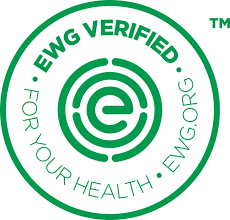
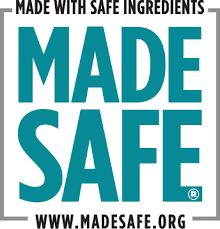
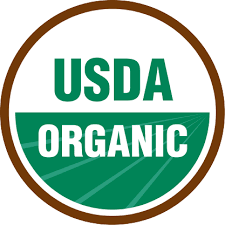
- tbM: What Ingredients should we avoid altogether?
- CK: While it’s tricky to choose just 10, I’d recommend starting with eliminating these from your personal care products:
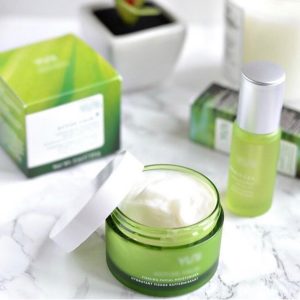
Top 10 Toxic Ingredients To Avoid!
*trubeautyQUICKTIP: screenshot or Pin this post to refer to while shopping (make sure you’re following our trubeautyMOVEMENT Board on Pinterest here)!
1. Parabens (Methyparaben, Ethylparaben, Butyparaben, Isopropylparaben, Propylparaben, Isobutylparaben)
2. Fragrance (*Note: hundreds of unknown chemicals could potentially be listed under the word “fragrance” on product labels)
3. Polyethylene glycol or PEG’s
4. Formaldehyde and formaldehyde releasers (DMDM Hydantoin, Diazolidinyl Urea, Imidazolidinyl Urea, Quaternium-15, Sodium Hydroxymethylglycinate, 2-Bromo-2-Nitropropane-1,3-Diol, Polyoxymethylene Urea, 5-Bromo-5-Nitro-1,3 Dioxane, Glyoxal, Methenamine and Benzylhemiformal)
5. Methylisothiazolinone or Methylchloroisothiazolinone
6. Cyclotetrasiloxane or D4
7. Sodium Laureth Sulfate (SLES) or Sodium Lauryl Sulfate (SLS)
8. Petrolatum, Paraffin and Mineral Oil
9. BHT or Butylated hydroxytoluene
10. Chemical Sunscreens (Avobenzone and Oxybenzone)”
Additional Resources—Apps / Sites To Look-Up Ingredients And Products
- EWG Skin Deep database: https://www.ewg.org/skindeep/#.W1t2bdhKg6
- Think Dirty app: https://www.thinkdirtyapp.com/
Share + Tag Your Friends—For Beauty That’s More Than Skin Deep
Friends who care—share! Okay, so maybe I got that line from my daughter’s recent episode of Word Party on Netflix lol, but it’s true… Friends look-out for each other, especially us trubeautys! So, be sure to share this post and tag your friends and family, so that they can be informed of the list above and choose healthier options for their families! Knowledge is power and there is so much power in passing along vital info through word-of-mouth and social media these days! So, let’s all come together and share this powerful knowledge so that we can make the real difference we know we can make with our trubeautyMOVEMENT!
Like, Comment + Follow @trubeautyMOVEMENT For More Tips & Tutorials!
*All my @trubeautyMOVEMENT Social links are located at the upper right-hand corner of my Blog, so you can quickly connect with ease + don’t forget to follow Carley @cleanbcarley 😉
I truly hope you all loved this month’s Ask The Expert interview! Be sure to search my Blog “Categories” for my other Ask The Expert Blog posts + search my YouTube channel’s playlists. I would love to hear if YOU have any green beauty questions for me or Carley that I didn’t cover in my Q & A; if you learned something new in this interview that was helpful, what product you are tossing after this interview and why, or anything else about this topic you would like to share with the rest of us trubeautys! Individually we can only do so much, but together as a Movement we can make a huge impact! Let’s let our voices be heard, raise the bar on ingredients we allow into our homes for ourselves and our families, & continue to make a much needed shift in the beauty industry!
Until next time—be balanced. be tru. & proud to be YOU!
xo! Heath









